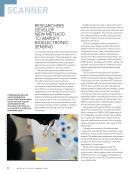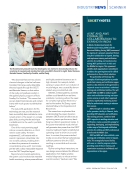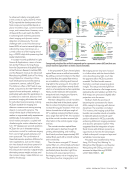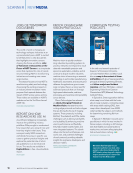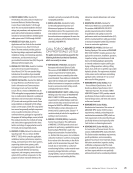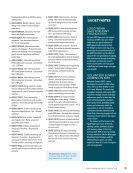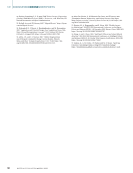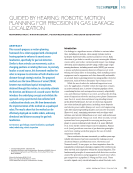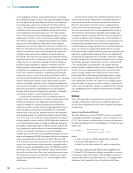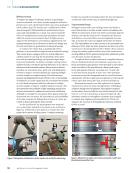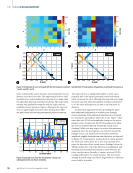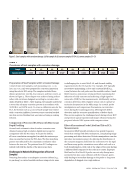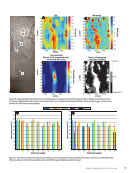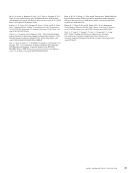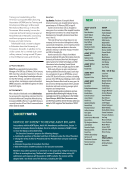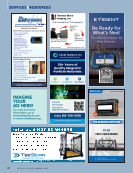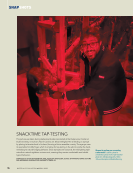be addressed in future work. First, the assumption that the
source is always in front of the robot may not hold in all sce-
narios. To enable the robot to discern whether the leak source
is in front or behind, additional features like sound pressure
levels could be beneficial. In this context, the use of pinnae or
external ears may help the robot improve its sense of direction-
ality. Moreover, to minimize noise interference and manage file
sizes, the system avoids continuous recording while the robot
is moving. Instead, the robot pauses briefly—less than 1 s—at
each step to capture a signal. This approach ensures accurate
data acquisition without the complexity of segmenting con-
tinuous recordings and mapping them to corresponding
microphone positions. Furthermore, our sensitivity analysis on
distance, as shown in Figure 11a, reveals that the distance esti-
mation error generally increases as the distance to the source
grows. However, as shown in Figure 11b, the direction estima-
tion error remains relatively low compared to the distance
error, aligning with the results mentioned by Rascon and Meza
(2017). These findings suggest that an iterative implementation
of the algorithm may be particularly beneficial in scenarios
where the source is far from the robot. Additionally, iterative
updates could prove advantageous in situations where the
direct path to the source is blocked, forcing the robot to rely on
signals arriving via indirect paths. Figure 11c illustrates such a
scenario, comparing localization accuracy between direct and
indirect path conditions.
On the other hand, the presence of other relatively strong
sound sources may interfere with the system’s performance
and potentially cause confusion. While our laboratory exper-
iment with two interfering sources—having voltage root-
mean-square (RMS) ratios of 0.9 and 1.3 relative to the source
at 8 m—showed no significant increase in error, the system’s
performance may still be affected in more complex real-world
scenarios. These scenarios highlight the importance of incor-
porating additional features to not only determine whether
the source is in front of or behind the robot, but also to guide
the robot to an optimal distance from the leak for accurate
localization. Moreover, the robot should be capable of distin-
guishing between different sound signals, allowing it to differ-
entiate between leakage sounds and other noise sources while
moving in industrial environments. This can be implemented
using supervised learning models trained on datasets such as
MIMII (Purohit et al. 2019).
Future work should prioritize fully automating the
processes involved in gas leak detection, including
decision-making capabilities, and integrating the Z-dimension
into the algorithm. This includes enhancing the robotic system
to discern whether a sound source is in front or behind the
robot and enabling differentiation between leakage sources
and environmental noise. These improvements are crucial
for autonomous navigation in industrial environments and
accurate leak detection.
Environmental factors such as temperature, humidity,
and obstacles significantly affect gas leak localization, empha-
sizing the need for robust methodologies to maintain preci-
sion (Ye et al. 2020 Zheng et al. 2021). Advanced techniques
like Gaussian plume diffusion and beamforming algorithms
are used to mitigate noise and adapt to varying conditions,
while sensor fusion methods, such as Kalman filters and
machine learning, integrate data from multiple sources to
enhance reliability (Doshmanziari et al. 2020 Zhao et al. 2021).
Incorporating thermal and visual data further boosts adaptabil-
ity, as demonstrated by deep learning models like VideoGasNet
(Zhang et al. 2022). Furthermore, real-time algorithms, such
as particle swarm optimization and variational Bayesian infer-
ence, dynamically respond to environmental changes, making
them indispensable for achieving precise and robust leak
detection in complex scenarios (Zhang 2022 Ma et al. 2020).
Conclusion
In this study, inspired by nature, we explored the impact of
rotational and translational motion on improving sound source
localization (SSL) using only two microphones. Initially, we
utilized the precision of the robotic arm to analyze how these
2 3
0
5
10
4 5
Initial distance to source (m)
X (m)
6 7 8
2 2.5 3.5 4.5 5.5 6.5 3
0
0.5
1
1.5
4 5
Initial distance to source (m)
6 7
–6
5
5.5
6
6.5
7
7.5
8
–5.5 –5 –4.5 –4 –3.5
Smoothed data
Moving average
Leak position
Estimated location: direct path
Estimated location: indirect path
–0.05488
–0.05316
5
–0 .041
1 6
–0.036
0 15
Figure 11. Sensitivity analysis on (a) distance and (b) direction (c) comparison of localization accuracy between direct and indirect paths.
A P R I L 2 0 2 5 • M AT E R I A L S E V A L U AT I O N 59
Y
(m)
Direction
error (degrees)
Distance
error
(m)
source is always in front of the robot may not hold in all sce-
narios. To enable the robot to discern whether the leak source
is in front or behind, additional features like sound pressure
levels could be beneficial. In this context, the use of pinnae or
external ears may help the robot improve its sense of direction-
ality. Moreover, to minimize noise interference and manage file
sizes, the system avoids continuous recording while the robot
is moving. Instead, the robot pauses briefly—less than 1 s—at
each step to capture a signal. This approach ensures accurate
data acquisition without the complexity of segmenting con-
tinuous recordings and mapping them to corresponding
microphone positions. Furthermore, our sensitivity analysis on
distance, as shown in Figure 11a, reveals that the distance esti-
mation error generally increases as the distance to the source
grows. However, as shown in Figure 11b, the direction estima-
tion error remains relatively low compared to the distance
error, aligning with the results mentioned by Rascon and Meza
(2017). These findings suggest that an iterative implementation
of the algorithm may be particularly beneficial in scenarios
where the source is far from the robot. Additionally, iterative
updates could prove advantageous in situations where the
direct path to the source is blocked, forcing the robot to rely on
signals arriving via indirect paths. Figure 11c illustrates such a
scenario, comparing localization accuracy between direct and
indirect path conditions.
On the other hand, the presence of other relatively strong
sound sources may interfere with the system’s performance
and potentially cause confusion. While our laboratory exper-
iment with two interfering sources—having voltage root-
mean-square (RMS) ratios of 0.9 and 1.3 relative to the source
at 8 m—showed no significant increase in error, the system’s
performance may still be affected in more complex real-world
scenarios. These scenarios highlight the importance of incor-
porating additional features to not only determine whether
the source is in front of or behind the robot, but also to guide
the robot to an optimal distance from the leak for accurate
localization. Moreover, the robot should be capable of distin-
guishing between different sound signals, allowing it to differ-
entiate between leakage sounds and other noise sources while
moving in industrial environments. This can be implemented
using supervised learning models trained on datasets such as
MIMII (Purohit et al. 2019).
Future work should prioritize fully automating the
processes involved in gas leak detection, including
decision-making capabilities, and integrating the Z-dimension
into the algorithm. This includes enhancing the robotic system
to discern whether a sound source is in front or behind the
robot and enabling differentiation between leakage sources
and environmental noise. These improvements are crucial
for autonomous navigation in industrial environments and
accurate leak detection.
Environmental factors such as temperature, humidity,
and obstacles significantly affect gas leak localization, empha-
sizing the need for robust methodologies to maintain preci-
sion (Ye et al. 2020 Zheng et al. 2021). Advanced techniques
like Gaussian plume diffusion and beamforming algorithms
are used to mitigate noise and adapt to varying conditions,
while sensor fusion methods, such as Kalman filters and
machine learning, integrate data from multiple sources to
enhance reliability (Doshmanziari et al. 2020 Zhao et al. 2021).
Incorporating thermal and visual data further boosts adaptabil-
ity, as demonstrated by deep learning models like VideoGasNet
(Zhang et al. 2022). Furthermore, real-time algorithms, such
as particle swarm optimization and variational Bayesian infer-
ence, dynamically respond to environmental changes, making
them indispensable for achieving precise and robust leak
detection in complex scenarios (Zhang 2022 Ma et al. 2020).
Conclusion
In this study, inspired by nature, we explored the impact of
rotational and translational motion on improving sound source
localization (SSL) using only two microphones. Initially, we
utilized the precision of the robotic arm to analyze how these
2 3
0
5
10
4 5
Initial distance to source (m)
X (m)
6 7 8
2 2.5 3.5 4.5 5.5 6.5 3
0
0.5
1
1.5
4 5
Initial distance to source (m)
6 7
–6
5
5.5
6
6.5
7
7.5
8
–5.5 –5 –4.5 –4 –3.5
Smoothed data
Moving average
Leak position
Estimated location: direct path
Estimated location: indirect path
–0.05488
–0.05316
5
–0 .041
1 6
–0.036
0 15
Figure 11. Sensitivity analysis on (a) distance and (b) direction (c) comparison of localization accuracy between direct and indirect paths.
A P R I L 2 0 2 5 • M AT E R I A L S E V A L U AT I O N 59
Y
(m)
Direction
error (degrees)
Distance
error
(m)











